Find out how to cook vegetables to retain nutrients and get maximum health benefits. As important as it is to eat your vegetables, you should also consider making good choices when it comes to the best cooking method to retain the vitamins and minerals in those vegetables.
Table of contents
Cooking methods to retain nutrients
Different vegetables require different cooking methods as well as cooking times, i.e. boiling, steaming, sautéing and baking. I’ll explain below how each is done, so that you know the right way when you start to implement those methods.
Boiling vegetables
Boil vegetables in a large pot (about 3 litres) with lots of water and bring to a rapid boil. Add veggies to the boiling water and boil for a required amount of time.
Steaming vegetables
A great method to retain as many nutrients as possible is steaming. To steam vegetables, fill the bottom of a steamer pot with 5cm (2 inches) of water. Wait for the water to come to a rapid boil before adding vegetables (into the steamer basket) and steam for a required amount of time.
Sautéing vegetables
To sauté vegetables, heat 5 tablespoons of broth or water in a stainless steel skillet or pot. Once bubbles begin to form add the veggies, cover, and sauté for as long as necessary.
Baking or roasting vegetables
As you will notice, I won’t recommend baking or roasting vegetables (with a few exceptions). It’s because of the high temperatures that would destroy most of vitamins and minerals as well as increased glycemic load, especially true when it comes to starchy vegetables.
However, when you do bake vegetables, use a baking sheet lined with parchment paper or silicone mat and NO oil (not even olive oil). Instead, make a good use of herbs and spices if you’re afraid that your veggies lack of flavour. Believe me, your veggies will be delicious in their own juices!
Even if baking is not the best way to retain nutrients, you still can enjoy the yumminess! The trick is to eat the same veggie in different states to get the most benefits – raw, steamed or sautéed and baked.
How to Cook Vegetables to Retain Nutrients and Maximise Health Benefits
Find out how to cook some of my favourite and most common vegetables to retain nutrients and maximise health benefits as well as flavour.
How to Cook Cruciferous Vegetables and Leafy Greens to Retain Nutrients
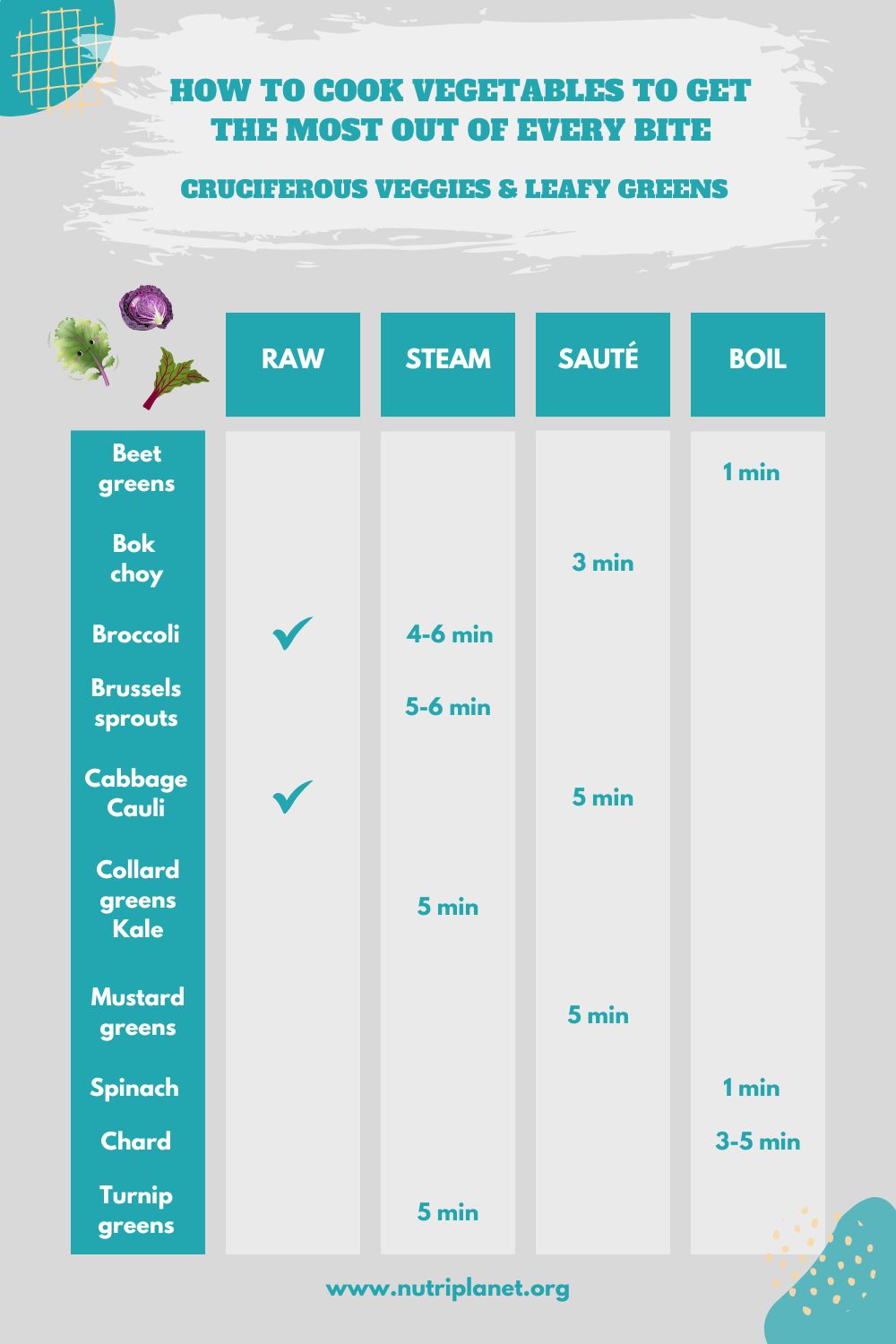
Beet Greens
- Boil beet greens for 1 minute to free up acids (including oxalic acid) and allow them to leach into the boiling water. It also brings out a sweeter taste from the beet greens.
- If you are cooking larger quantities (more than 1 pound, 450 grams), bring the water back to a boil before beginning timing the minute. Do not cover the pot when cooking beet greens. Leaving the pot uncovered helps to release more of the acids.
- Discard the boiling water after cooking. Do not drink it or use it for stock because of its acid content.
Bok Choy
Chop the leaves into 0.3cm (⅛-inch) slices and the stems into 1.3cm (½-inch) lengths for even cooking. The healthiest way to cook bok choy is to sauté it. Add the stems on the bottom of the pan and the leaves on top, cover, and sauté for 3 minutes.
Broccoli
For maximum health benefits, eat broccoli raw and steamed. Steam broccoli stems for 2 minutes before adding the florets and leaves. Steam for 4 more minutes.
Brussels Sprouts
Again, steaming is the best option for Brussels sprouts as well. If Brussels sprouts are cut into quarters, steam for 6 minutes. If you have chopped them into smaller pieces, steam for 5 minutes. Add Brussels sprouts to Buddha bowl.
Cabbage
- Eat cabbage raw, fermented and sautéed.
- Slicing cabbage very thin before cooking and letting it sit for 5-10 minutes helps bring out their hidden flavours and makes them more enjoyable.
- Sauté shredded cabbage for 5 minutes.
- Finally, several studies indicate that raw cabbage can offer greater amounts of certain nutrients than either cooked or fermented cabbage. In one study, the incorporation of fresh, uncooked, chopped red cabbage was recommended as an optimal way to derive nutritional benefits from this cruciferous vegetable.
Cauliflower
It is recommended to eat cauliflower raw and sautéed. To sauté cauliflower begin by cutting the florets into quarters and let sit for at least 5 minutes to enhance its health-promoting benefits. Then, sauté cauliflower for 5 minutes.
Collard Greens
Steaming for 5 minutes is the best way to cook collard greens. This way you also maximise their flavour.
Kale
Again, steaming for 3-5 minutes is the best option also for kale. Chop leaves into 1.3cm (½”) slices and the stems into 0.6cm (¼”) lengths for even cooking.
Also, you might consider freezing and then steaming the kale because frozen kale has shown a 60% higher antioxidant capacity than fresh.
Furthermore, blanching and steaming actually boost the antioxidant content of kale, whereas microwaving or even boiling doesn’t seem to do much. [source]
Mustard Greens
When it comes to mustard greens, sautéing for 5 minutes is the best to retain nutrients. Rinse mustard greens under cold running water and cut into 1.3cm (½”) slices for even cooking.
Spinach
Boil spinach for 1 minute to free up acids and allow them to leach into the boiling water. Discard the boiling water after cooking and do not drink it or use it for stock because of its acid content. Remove spinach from pot, press out liquid with a fork.
Spinach should be washed very well since the leaves and stems tend to collect sand and soil. Make my yummy Spinach Dip.
Swiss Chard
- Boil to free up acids and allowing them to leach into the boiling water. Discard the boiling water after cooking.
- If stems are more than 2.5cm (1-inch) wide, cook them for 2 minutes before adding the leaves. If the stems are smaller than that, boil the leaves and stems together for 3 minutes.
- If you are cooking large quantities of chard (more than 1 pound, 450 grams), bring the water back to a boil before beginning timing the 3 minutes.
- Do not cover the pot when cooking chard. Leaving the pot uncovered helps to release more of the acids with the rising steam.
Turnip Greens
Steaming for 5 minutes is the best way to cook turnip greens to retain the nutrients. Chop greens into 0.3cm (⅛-inch) slices for even cooking.
Important note about cruciferous vegetables
Cruciferous vegetables (think broccoli, cauliflower, kale, pak choi, arugula, Brussels sprouts, cabbage, radishes, turnips) also have amazing anti-cancer and estrogen-blocking properties. Their distinctive sulphur smell comes from a compound that kills cancer cells in their tracks, so this is a class of vegetables that should be on everyone’s plate.
Aim for a generous 2½-cup serving each day. Because some of their beneficial phytochemicals are more available when they’re cooked, and others when they’re eaten raw, eat a variety, and mix up how you prepare them too.
The most beneficial compound in cruciferous vegetables is sulforaphane. It may protect our brain, eyesight, protect us against free radicals, induce our detoxification enzymes, help prevent cancer, as well as help treat it.
However, the formation of this chemical requires the mixing of a precursor compound with an enzyme in cruciferous vegetables, which is destroyed by cooking.
Here’s what you can do to enjoy the benefits of sulforaphane even when you want to cook your cruciferous veggies:
- Chop and wait technique.
If you chop the broccoli, Brussels sprouts, kale, collards, or cauliflower first, and then wait 40 minutes, then you can cook them all you want. The sulforaphane is already made, the enzyme is already done doing its job, so you don’t need it anymore. - Add raw veggies to cooked ones.
This works because the fresh greens have that enzyme that can go to work on the precursor in the cooked greens. - Sprinkle on some crushed mustard seeds, daikon radish, horseradish, or wasabi.
An addition of powdered mustard seeds or radishes to cooked cabbage-family vegetables provides a natural source of the enzyme and then it’s like you’re practically just eating it raw. Just a pinch on your plate will do the trick.
Read more from Science-Backed Food Combining.
How to Cook Other Non-Starchy Vegetables to Retain Nutrients
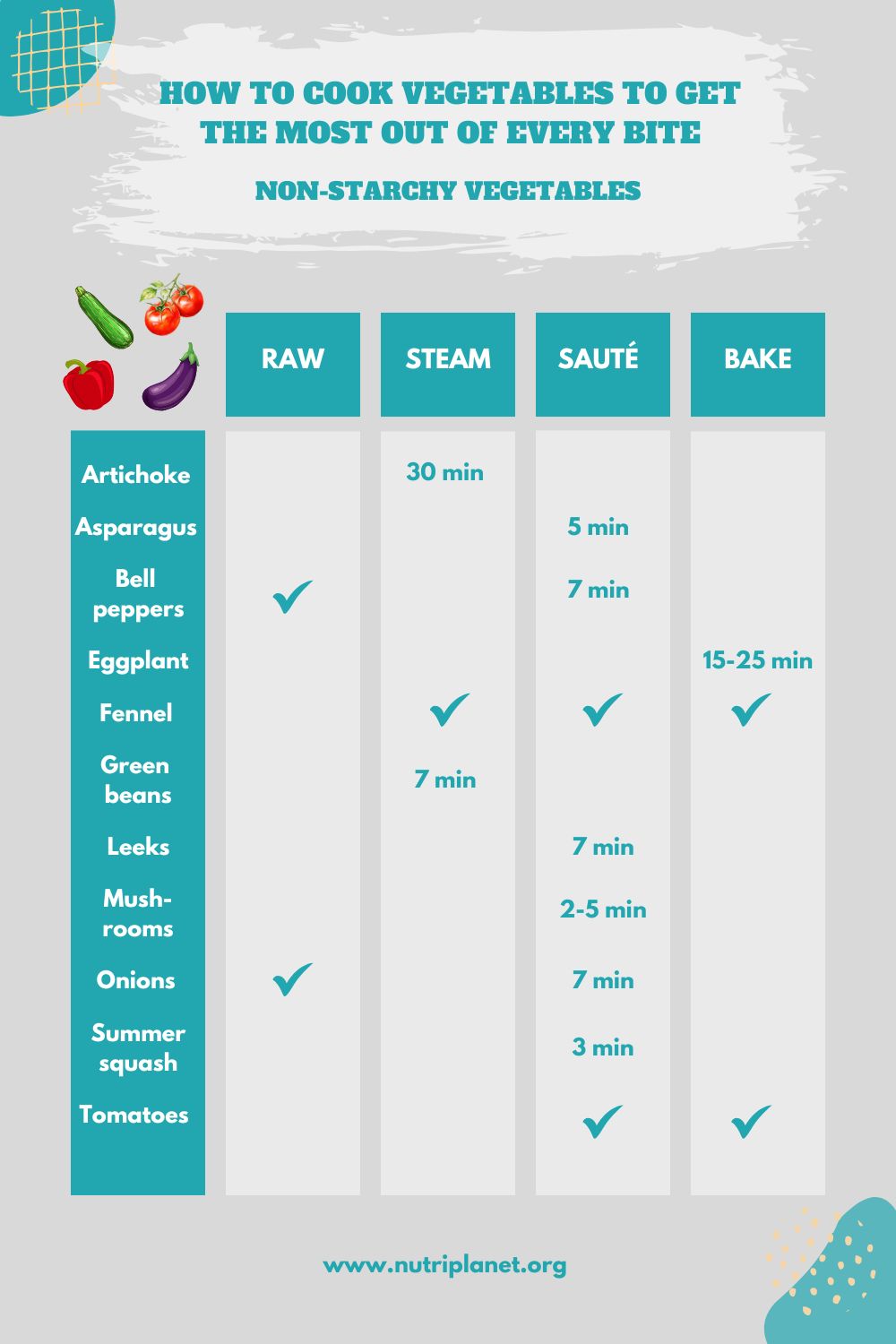
Artichoke
Start by rinsing the artichokes. Next, shake them out in the sink and then pat dry. Now, using a sharp knife, chop off about ¾ inch off the crown of the artichoke. Next, cut off ¼ inch from the bottom of the stem and discard.
To steam, add enough water to a pot so that water reaches the bottom of the steamer basket. Place artichokes in the basket and steam for 30 minutes or until leaves are fork tender. Serve immediately.
Asparagus
The healthiest way to cook whole asparagus is to sauté it for 5 minutes. If you want to cut asparagus into small pieces, do it after they are cooked. Asparagus can be served hot or cold.
Bell Peppers
Eat bell peppers raw and sautéed. Sauté sliced bell peppers for 3 minutes on medium heat. After 3 minutes add 2 tbsps. of water and cook uncovered on low heat for another 4 minutes, stirring constantly.
Celery
To clean celery, cut off the base and leaves, then wash the leaves and stalks under running water. Cut the stalks into pieces of desired length. If the outside of the celery stalk has fibrous strings, remove them by making a thin cut into one end of the stalk and peeling away the fibres. Be sure to use the leaves—they contain the most vitamin C, calcium, and potassium—but use them within a day or two, as they spoil easily.
Don’t keep celery at room temperature for more than several hours, because it would wilt too quickly. If you have celery that has wilted, sprinkle it with a little water and place it in the refrigerator for several hours to help it regain some of its crispness.
Use celery in Hearty Vegan Curry.
Eggplant
When cutting an eggplant, use a stainless steel knife as carbon steel will react with its phytonutrients and cause it to turn black.
To tenderise eggplant’s texture and reduce some of its naturally occurring bitter taste, you can sweat the eggplant by salting it. After cutting the eggplant into the desired size and shape, sprinkle it with Himalayan salt and allow it to rest for about 30 minutes. This process will pull out some of its water content.
Rinsing the eggplant after “sweating” will remove most of the salt, if you prefer to minimize your sodium intake.
Eggplant can be baked, roasted in the oven, or steamed. If baking it whole, pierce the eggplant several times with a fork to make small holes for the steam to escape. Bake the eggplant at 175°C (350°F) for 15 to 25 minutes, depending on size. You can test its readiness by gently inserting a knife or fork into it. The knife should pass through easily.
Fennel
The three different parts of fennel – the base, stalks and leaves – can all be used in cooking. Cut the stalks off the bulb at the place where they meet. If you are not going to be using the intact bulb in a recipe, then cut it in half, remove the base, and rinse with water before proceeding to cut it further. Fennel can be cut in a variety of sizes and shapes, depending on the recipe and your personal preference. The best way to slice it is to do so vertically through the bulb. If your recipe requires chunked, diced or julienned fennel, it is best to first remove the harder core that resides in the centre before cutting it.
The stalks of the fennel can be used for soups, stocks and stews, while the leaves can be used as an herb seasoning.
Green Beans
Steam rinsed whole green beans for 7 minutes, checking the tenderness with knife. Before steaming remove both ends of the beans by either snapping them off or cutting them with a knife.
Leeks
Sauté cut leeks for 4 minutes. Then, add 2 more tablespoons of water or broth, reduce heat to medium low, and sauté for 3 more minutes uncovered while stirring frequently.
Mushrooms
Sauté them for at least one minute to destroy agaritine, a natural toxin found in mushrooms.
Onions
It is recommended to sauté sliced onions to retain the nutrients and enhance flavour. When water begins to steam, add onions and cover for 3 minutes. The onions will release a small amount of liquid. Then, uncover, add another 2 tbsps. of water, and continue to stir for 4 minutes, leaving the lid off.
Summer Squash
Sauté sliced summer squash in a stainless steel skillet for 3 minutes (1.5 minutes on one side, and then 1.5 minutes on the other side) on medium heat.
Tomatoes
When cooking tomatoes avoid aluminium cookware, because the high acid content of the tomatoes may interact with the metal in the cookware. As a result, there may be migration of aluminium into the food.
Try to use whole tomatoes whenever possible because research has been showing higher lycopene content in whole tomato products. For example, when the skins of tomatoes are included in the making of the tomato paste, the lycopene and beta-carotene content of the paste is significantly higher.
When making tomato paste, simmer for 30-45 minutes.
Tomato puree is awesome in my Vegan Lentil Stew.
Important Note About Allium Family
Onions, garlic, scallions, chives, leeks, and shallots are part of allium vegetables.
These vegetables are known for their characteristic organosulfur compounds that are responsible for their anti-cancer properties. Like the isothiocyanates (ITCs) in cruciferous vegetables, these organosulfur compounds are released when these vegetables are chopped, crushed or chewed.
Therefore, eat them raw or wait 10 minutes after chopping before you start cooking them.
How to Cook Starchy Vegetables to Retain Nutrients
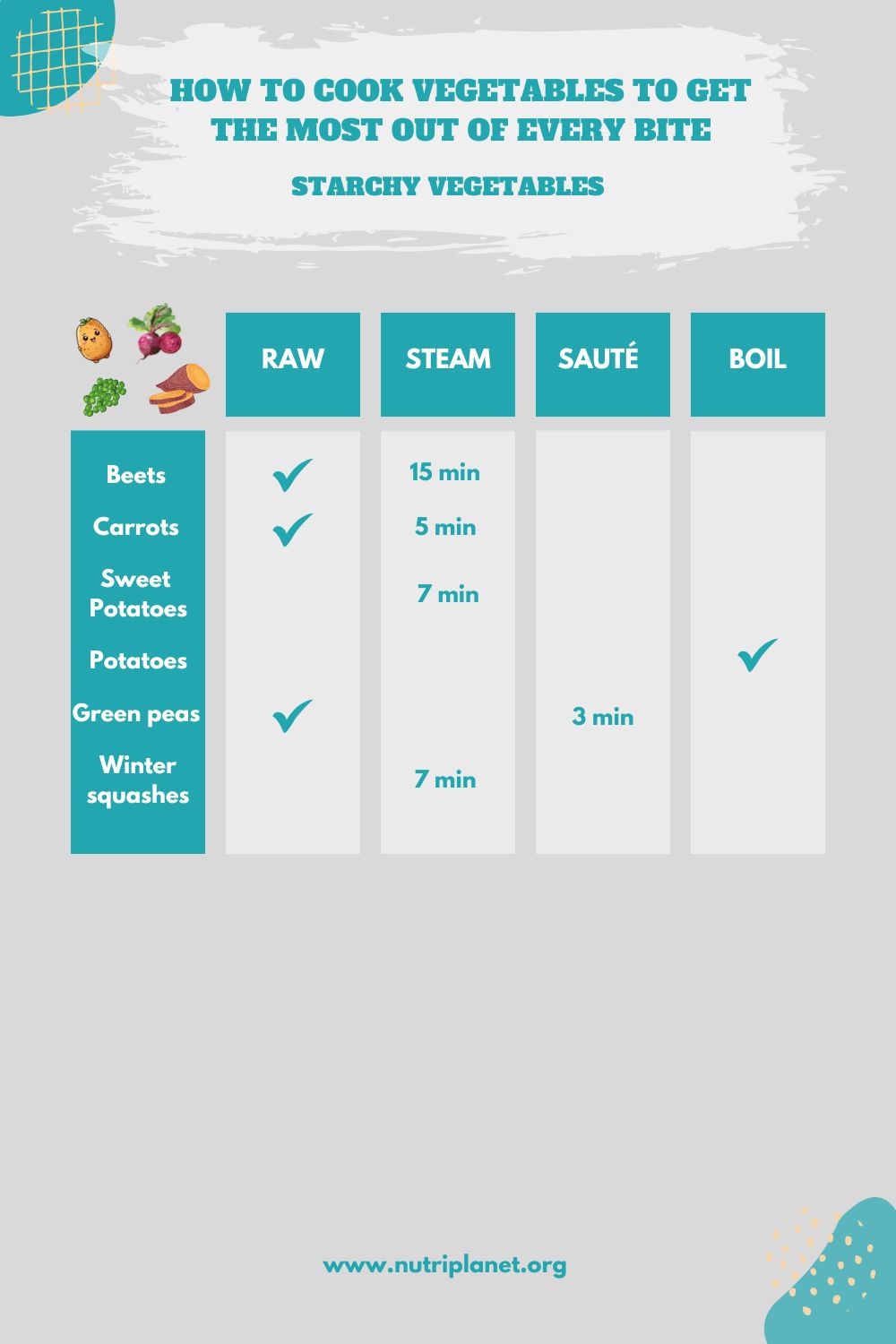
Beets
- Cut beets into quarters leaving 5cm (2 inches) of tap root and 2.5cm (1 inch) of stem on the beets. Cook beets lightly. Studies show beets’ concentration of phytonutrients, such as betalains, is diminished by heat.
- It is recommended to steam beets for 15 minutes. Beets are cooked when you can easily insert a fork or the tip of a knife into it.
- Beets’ colour can be modified during cooking. Adding an acidic medium such as lemon juice or vinegar will brighten the colour while an alkaline substance such as baking soda will often cause them to turn deeper purple. Salt will blunt beets’ colour, so add only at the end of cooking if needed.
Carrots
- Carrots are best eaten raw and cooked.
- The healthiest way to cook carrots is steaming. Slice carrots 0.6cm (¼-inch) thick and steam for 5 minutes.
- Also, add a bit of fat (nuts, seeds, coconut milk) to your meal with carrots for the conversion of beta-carotene into a special micellar form.
Green Peas
Green peas can be enjoyed raw and sautéed. Sauté green peas for 3 minutes.
Potatoes
Potatoes should be cleaned and cut right before cooking in order to avoid the discoloration that occurs with exposure to air. If you cannot cook them immediately after cutting, place them in a bowl of cold water with a bit of lemon juice. This will prevent their flesh from darkening and will also help to maintain their shape during cooking.
As potatoes are also sensitive to certain metals that may cause them to discolour, avoid cooking them in iron or aluminium pots or using a carbon steel knife to cut them.
Definitely eat the skin if you have organic potatoes, as the skin is a good source of dietary fibre.
Sweet potatoes
Steam 1.3cm (½-inch) slices for 7 minutes. Also, add a bit of fat (nuts, seeds, coconut milk) to your meal with sweet potatoes for the conversion of beta-carotene into a special micellar form. If your sweet potatoes are organic, eat also the skin.
Winter squashes
Steam 2.5cm (1-inch) cubes of winter squash for about 7 minutes.
Important note about starchy vegetables and resistant starch
Cooked and cooled starchy veggies (especially potatoes and sweet potatoes) contain resistant starch. They can be reheated at low temperatures, less than 54°C (130°F) and maintain the benefits of resistant starch.
The benefits of resistant starch:
- Increases satiety.
- Reduces fasting blood sugar and improves insulin sensitivity.
- Feeds “good” bacteria in your gut and may bind to and expel “bad” bacteria.
- Contributes to metabolizing “dirty” estrogens.
- Improves function of the gut.
Disclaimer: this post contains affiliate links. As an Amazon Associate I earn from qualifying purchases.
Sources:
http://whfoods.com/
https://pinklotus.com/powerup/breastcancer101/the-top-6-anti-estrogen-foods-for-breast-cancer-risk-reduction/
https://www.organicauthority.com/organic-food-recipes/how-to-cook-artichokes-3-easy-ways
https://hormonesbalance.com/articles/resistant-starch-a-prebiotic-that-helps-our-hormonal-balance/?preview=true&utm_source=newsletter&utm_medium=email
This post is also available in: Spanish

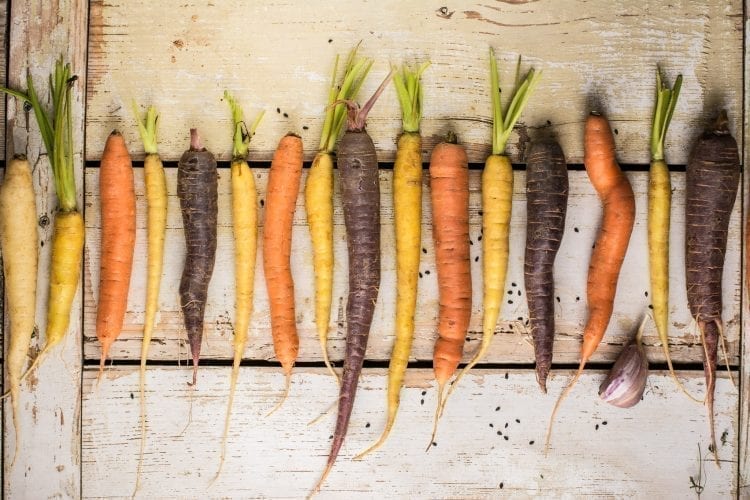











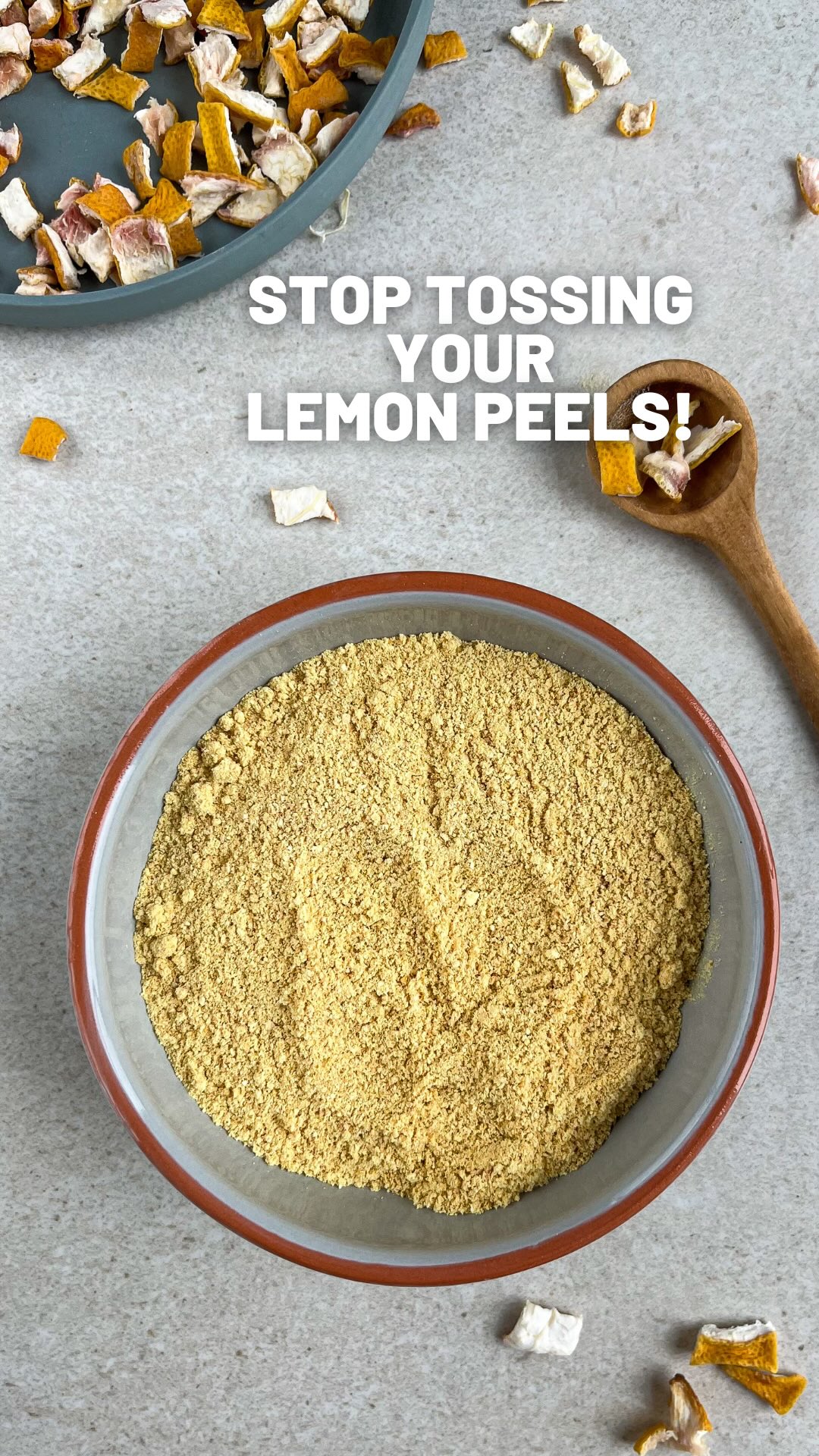
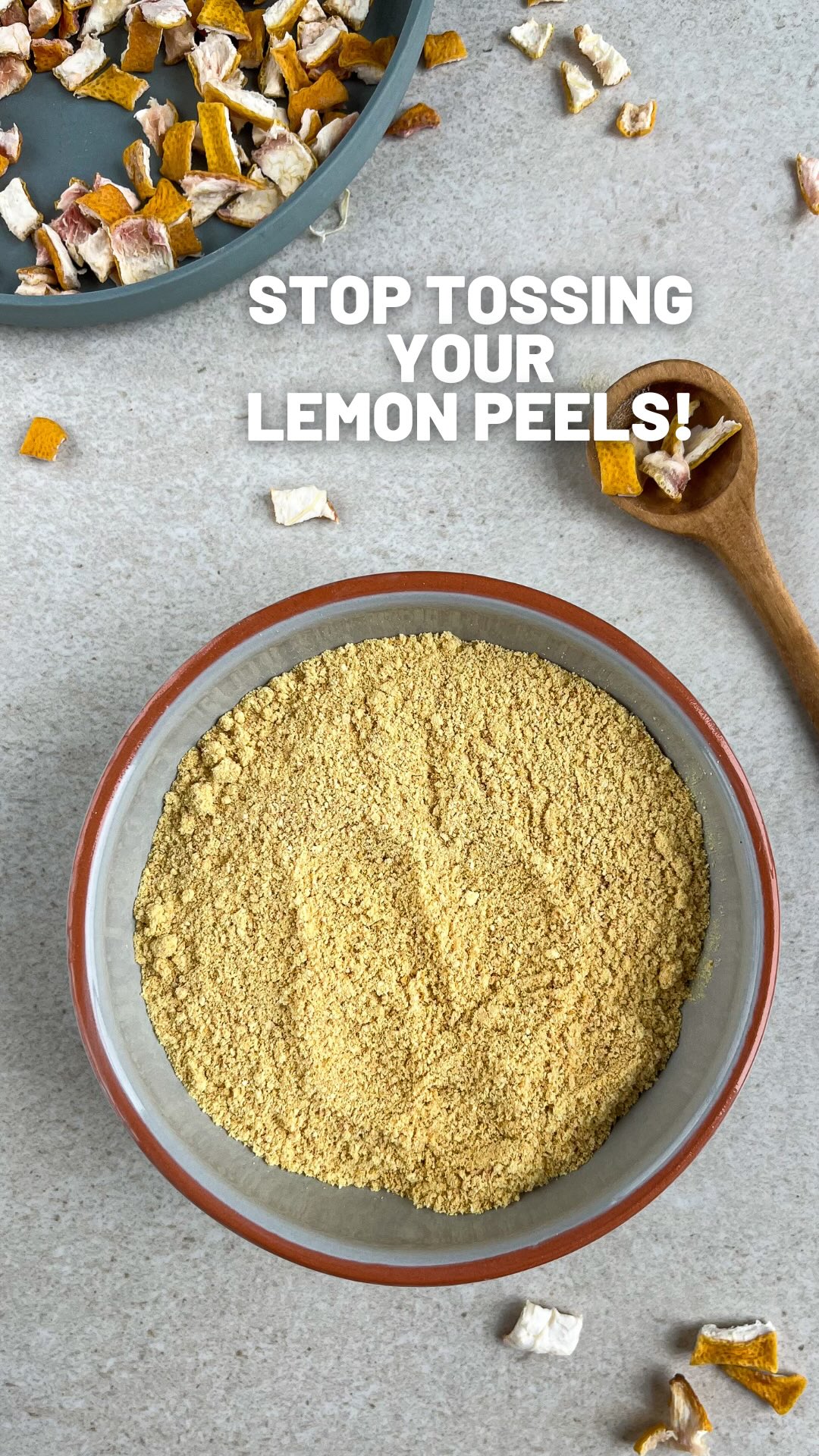

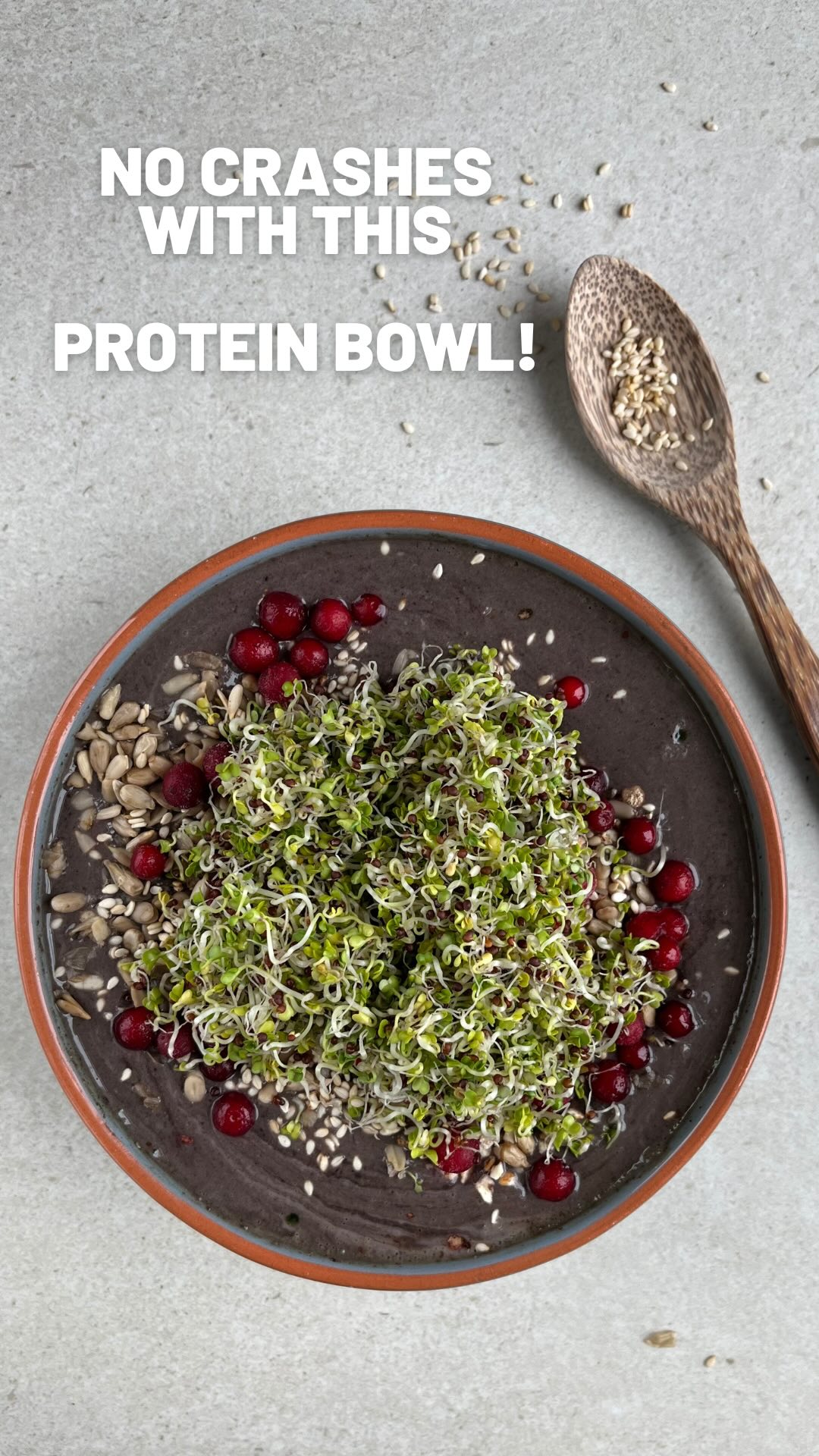











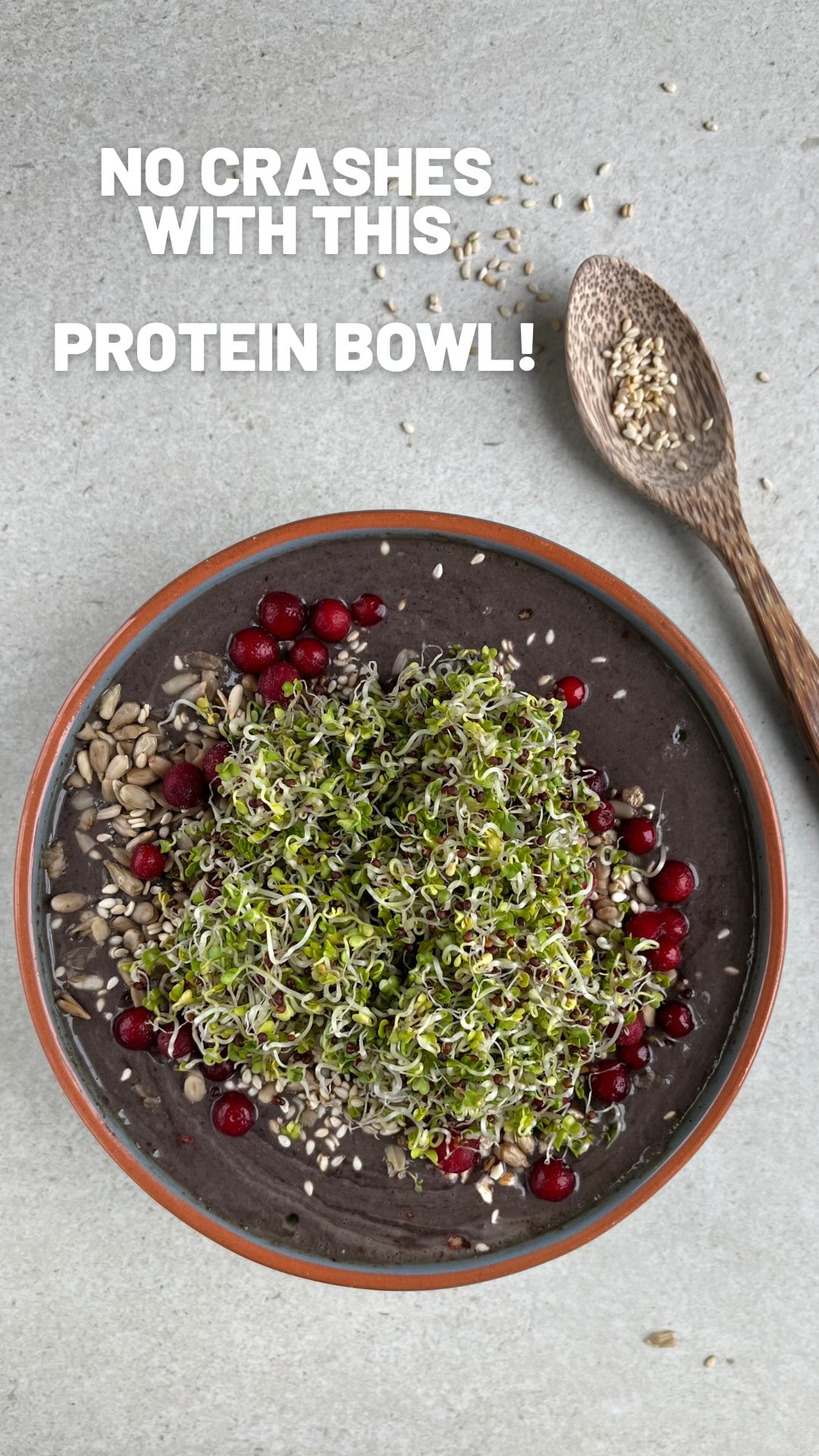









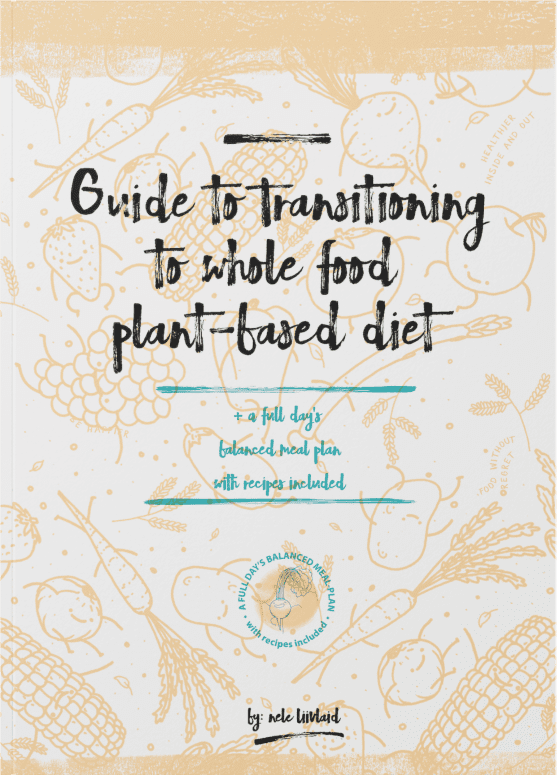
Thank you for the article.
What is your evidence that roasting destroys nutrients, and much more nutrients than other cooking methods?
And why no oil when roasting? Please enlighten. Thank you.
Hi! whfoods.com is a great source for how to cook most vegetables to retain the nutrients.
For the oil matter, watch those videos for example https://www.youtube.com/watch?v=b_o4YBQPKtQ&t=5s and https://www.youtube.com/watch?v=LbtwwZP4Yfs&t=153s and https://www.youtube.com/watch?v=L2XW2vqqTzo&t=50s
I love this information. What about Zucchini? Same as squash?
Thank you! For summer squash, according to whfoods.org, the healthiest cooking method is sautéing with water or broth for 3 minutes.
How long boil for potatoes?
Hi! Until they’re soft! Depends on the size.